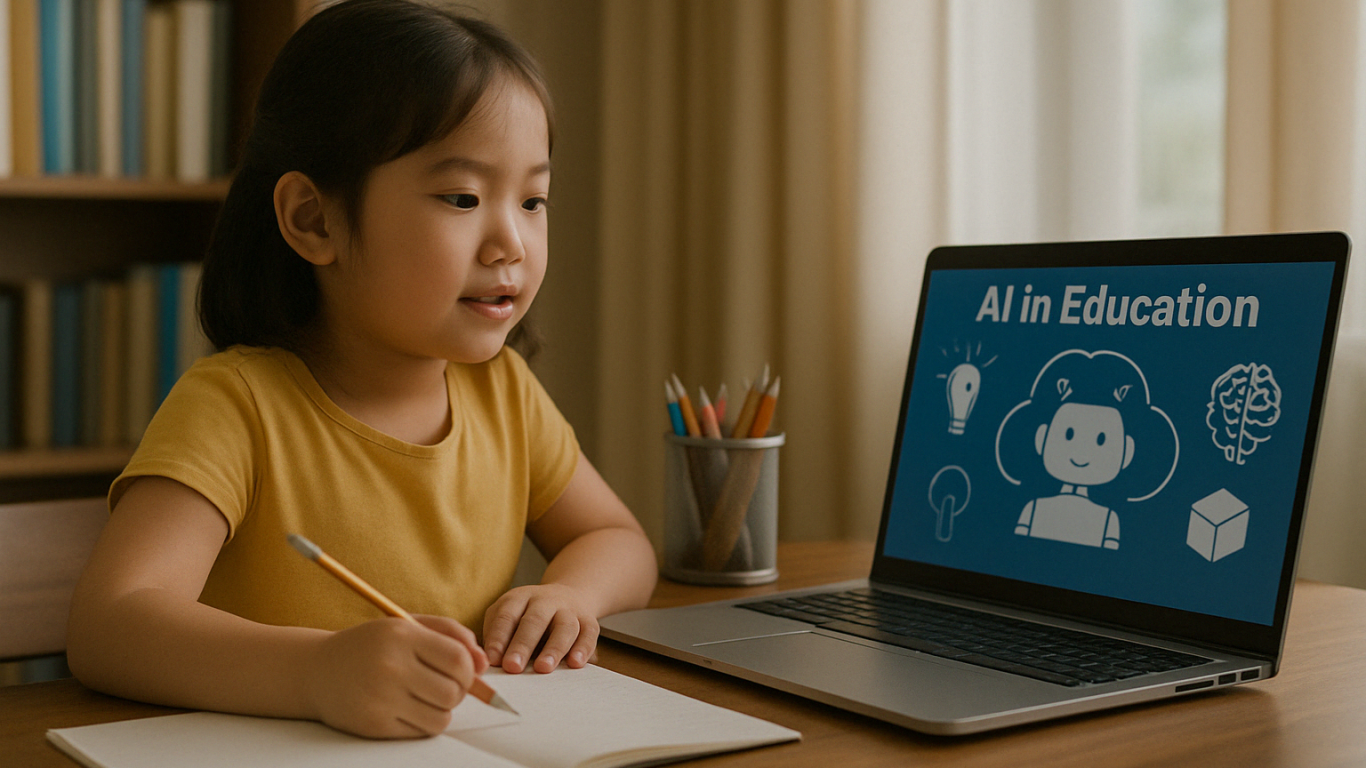The Role of AI for Kids Education
Picture this: a child learning math with a virtual tutor that patiently explains complex ideas. Or mastering a new language through interactive games, tailored to their learning speed and interests. This isn’t a fantasy—it’s the real-world impact of The Role of AI for kids education.
Artificial Intelligence (AI) is revolutionizing how children learn. With smart technology, education becomes more personalized, engaging, and flexible, helping every child unlock their true potential.
The Role of AI for Kids Education
Why AI for Kids Education Matters
Children are naturally curious, adaptable, and fast learners—ideal qualities for learning with AI. With advanced algorithms, AI can personalize learning paths for each child, making lessons more efficient and enjoyable.
Here’s how AI for kids education makes a difference:
- Adapts content based on each child’s learning progress
- Matches teaching methods to individual learning styles
- Provides real-time feedback and suggestions when a child struggles
AI can also track patterns—like which topics confuse a child, when they’re most focused, and how they best absorb information.
Key Benefits of AI for Kids Education

1. Personalized Learning for Every Child
No two children learn the same way. AI for kids education lets children learn at their own pace—whether they need extra time or crave advanced challenges. AI adapts to meet them exactly where they are.
2. Interactive and Engaging Lessons
From adaptive quizzes to fun simulations, AI turns learning into a game. To children, it feels like play. But underneath, they’re gaining deep understanding and critical thinking skills.
3. Instant Feedback
No more waiting days for test results. AI offers real-time feedback, helping kids quickly understand mistakes and try again. It also suggests additional exercises when needed.
4. Inclusive Support for Special Needs
AI-based tools can support children with dyslexia, ADHD, or other learning differences. From reading-aloud features to simplified instructions, AI makes education more inclusive for everyone.
5. Time-Saving for Parents and Teachers
AI automates reports and tracks progress, allowing parents and teachers to focus more on guidance and emotional support rather than grading and paperwork.
Real Examples of AI for Kids Education

Many platforms are already using AI for kids education successfully:
- Socratic by Google – Snap a homework question, get step-by-step help.
- Tynker – Teaches kids coding with gamified learning.
- Duolingo – Uses adaptive tech to personalize language learning.
- Khan Academy Kids – Combines fun animations with AI for early learning.
These tools show that AI for Kids education isn’t just theory—it’s shaping learning today.
Challenges of AI for Kids Education

Despite the benefits, there are important challenges to keep in mind:
1. Data Privacy
Children are vulnerable online. AI platforms must have strong protection for kids’ personal data.
2. Lack of Human Interaction
While AI is smart, it can’t replace real human friendships. Children still need to build empathy, teamwork, and social skills through real-life interaction.
3. Unequal Access
Not all families can afford AI devices or fast internet. Equal access must be a top priority for inclusive education.
4. Technology Overuse
Overreliance on screens can limit offline creativity. Children still need time to explore nature, books, and play beyond digital tools.
Human Support in AI for Kids Education

AI is a powerful tool, but it must be guided by people who care. Parents and teachers are essential in making sure AI for Kids Education technology is used wisely.
Here are some tips:
- Use age-appropriate, trusted AI platforms
- Supervise learning sessions and offer emotional support
- Teach kids about digital responsibility and screen time balance
- Mix AI learning with offline activities
Shaping the Future of Education Together

Ingin tahu detail program?
AI for kids education is not about replacing traditional learning—it’s about making it better. When used with care and purpose, AI helps children become confident, independent learners prepared for the future.
At Timedoor Academy, we believe in combining innovation with empathy. Let’s build a future where technology empowers children to thrive.
? Ready to Explore the Future of Learning?
Try a free class at Timedoor Academy and see how AI for kids education can spark your child’s learning journey today.